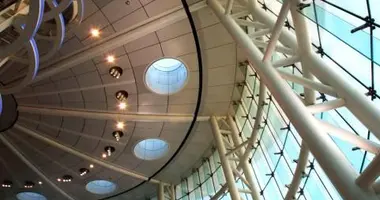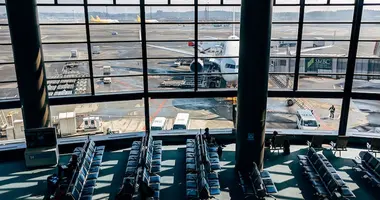Electrical outlets in Japan: everything you need to know for your trip
- Published on : 07/05/2024
- by : La rédaction
- Youtube
When you're planning your trip to Japan, you often think about booking your plane tickets and accommodation, and drawing up your itinerary... But we sometimes forget an essential detail: checking the compatibility of our electrical appliances! In fact, the characteristics of plugs and voltage are different in Japan. In this article, we explain everything you need to know about Japanese electrical outlets to travel with peace of mind: types of plugs used, voltage and frequency of current, need for adapters and transformers. Follow the guide to plug in your appliances with peace of mind during your stay in Japan!
Characteristics of Japanese electrical outlets
In Japan, sockets are of the A and B types. Type A sockets have two parallel flat plugs, as in North America. Type B has an additional U-shaped ground pin. Most type A sockets also accept type B plugs. These formats are therefore different from French sockets, which are mostly E-type with round plugs.
As for voltage, the current in Japan is 100 Volts, compared with 230 V in France. There are also two different frequencies depending on the region: 50 Hz in Eastern Japan (Tokyo, Yokohama...) and 60 Hz in Western Japan (Osaka, Kyoto...). This is generally not a problem for recent devices designed for a voltage range of 100-240V and 50/60Hz. But always check the label or manual of your appliance.
Differences between Japanese and French plugs
There are two major differences between electrical installations in Japan and France:
- The shape of plugs and sockets: type A/B with flat plugs in Japan, type E with round plugs in France. You'll need an adapter to plug in your French appliances.
- Voltage: 100V in Japan vs. 230V in France. Although most recent appliances support both, you need to be sure.
Frequency (50Hz or 60Hz) varies across Japan, but has little impact on most of today's equipment. Electrical standards are also different, with Japanese plugs, for example, often vertically oriented and protected against surges.
Do you need an adapter to plug in your appliances in Japan?
If you're coming from France or another country with different plugs, yes, you'll certainly need an adapter. Most of the devices you take with you on your trip (smartphones, cameras, laptops, etc.) will need one if they are to be recharged from a Japanese socket.
Before buying an adapter, check the voltage range supported by your devices, which is often indicated on the charger. If it says "100-240V, 50/60Hz", you don't need a voltage adapter, just a plug adapter for the format.
There are many adapters available, both Japan-specific and universal. Choose one that is compatible with both French and Japanese plugs, and preferably certified for added safety. Ideally, you should opt for a multi-socket adapter that allows you to plug in your various appliances at the same time.
Tips for using your electrical appliances safely in Japan
Once you've purchased your adapters, follow these tips for safe use of your appliances in Japan:
- Check voltage and frequency compatibility before plugging in an appliance, by referring to its label or manual.
- Avoid overloading power strips by plugging too many appliances into them, especially if they are large power consumers.
- Do not use a device or adapter that is visibly damaged or faulty.
- In the event of a problem (sparks, burning smell...), cut off the power supply immediately and contact the hotel reception desk or a professional.
The Japanese electrical network is of good quality and up to standard, but accidents are still possible if it is misused. Be careful, and don't hesitate to ask for advice if in doubt.
Do I need a voltage transformer?
Generally speaking, no. The vast majority of travel devices are designed for voltages from 100 to 240V. Your smartphones, tablets, cameras, laptops etc. should work in Japan without a transformer.
There are a few exceptions for more specific, energy-hungry appliances such as hair dryers or household appliances. Read the specifications carefully, and if in doubt, ask the manufacturer. Only use 220-240V appliances in Japan with a suitable transformer.
Also, avoid bringing old or low-end Japanese appliances designed for 100V only into Japan. They could burn out in a French socket without a transformer!
Where to buy an adapter for Japanese sockets?
You have several options for finding an adapter for Japan:
- Before leaving for France: electronics, DIY or travel stores, online sites (Amazon...).
- On arrival in Japan: international airports like Narita, major electronics retailers (Bic Camera, Yodobashi...), specialized neighborhoods like Akihabara, 100 yen shops, etc.
- At the hotel: adapters are often available from reception on request.
If you have several appliances, remember to take a French power strip in addition to a single adapter. And if you travel a lot, a universal adapter will quickly pay for itself.
With this information and the right equipment, you're all set to recharge your essential devices with complete peace of mind during your Japanese journey. A final word of advice: remember to check this point before you leave, so you don't find yourself without an adapter on arrival! Now that this technical detail has been taken care of, you can enjoy the archipelago to the full. Have a good trip, and happy shooting!













